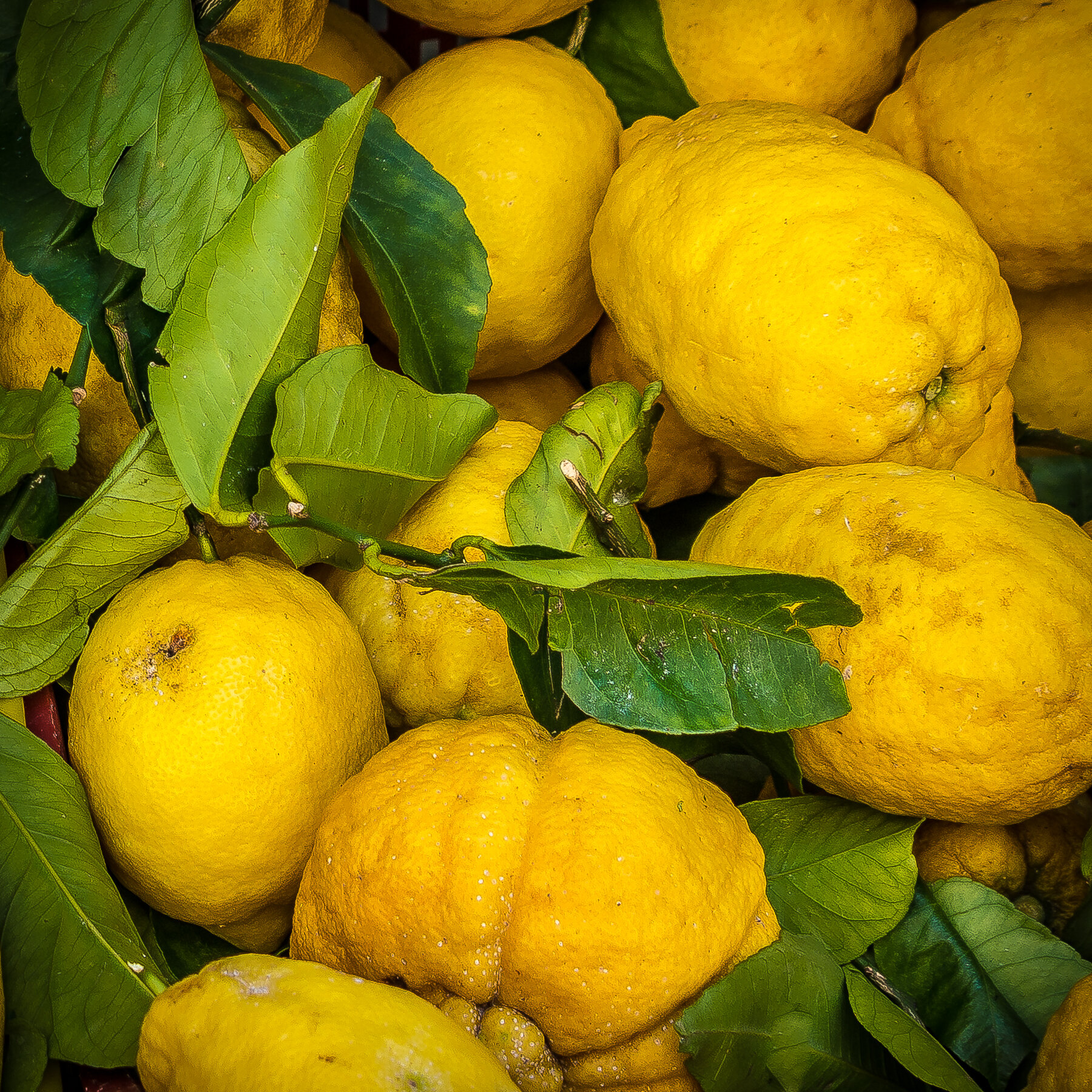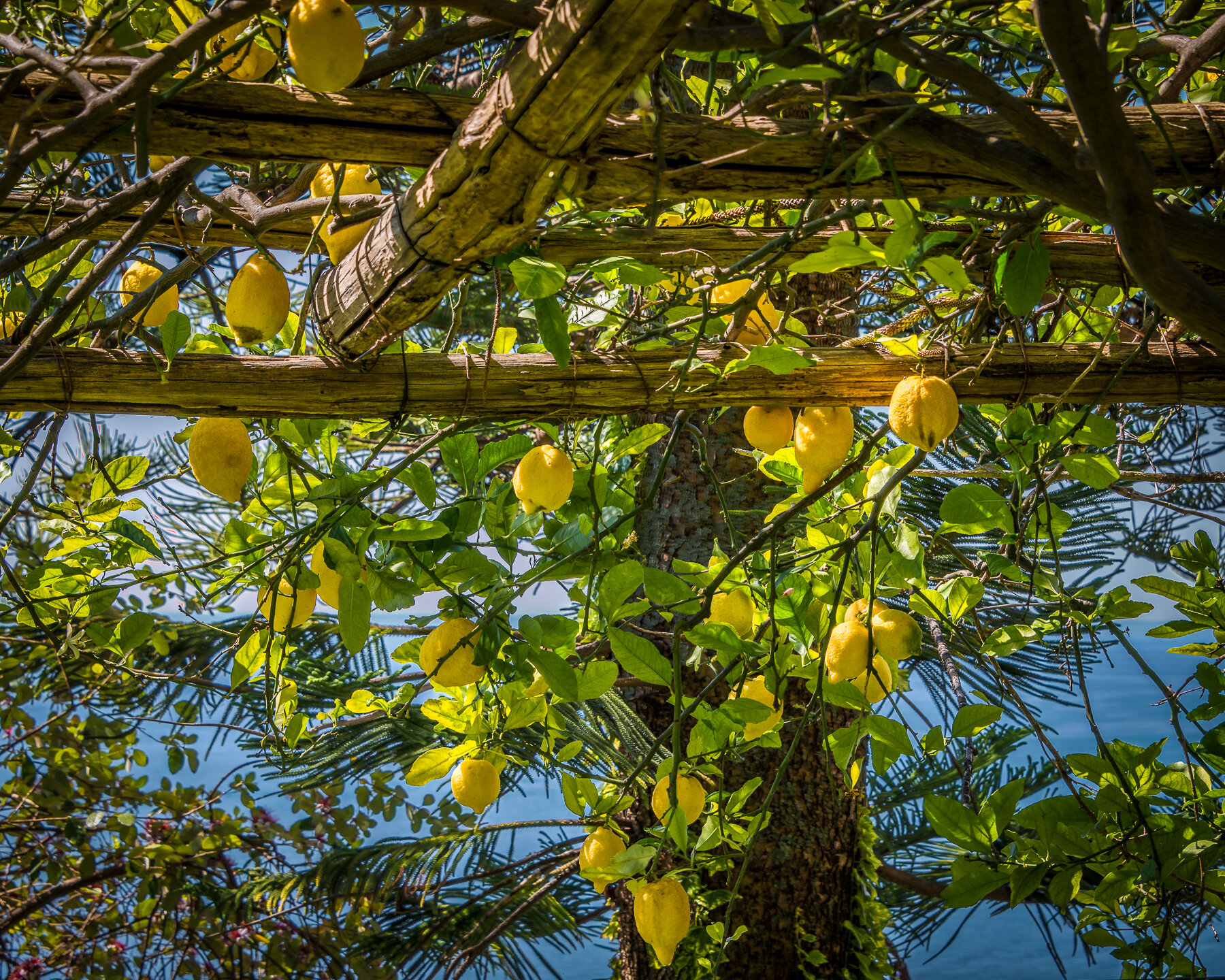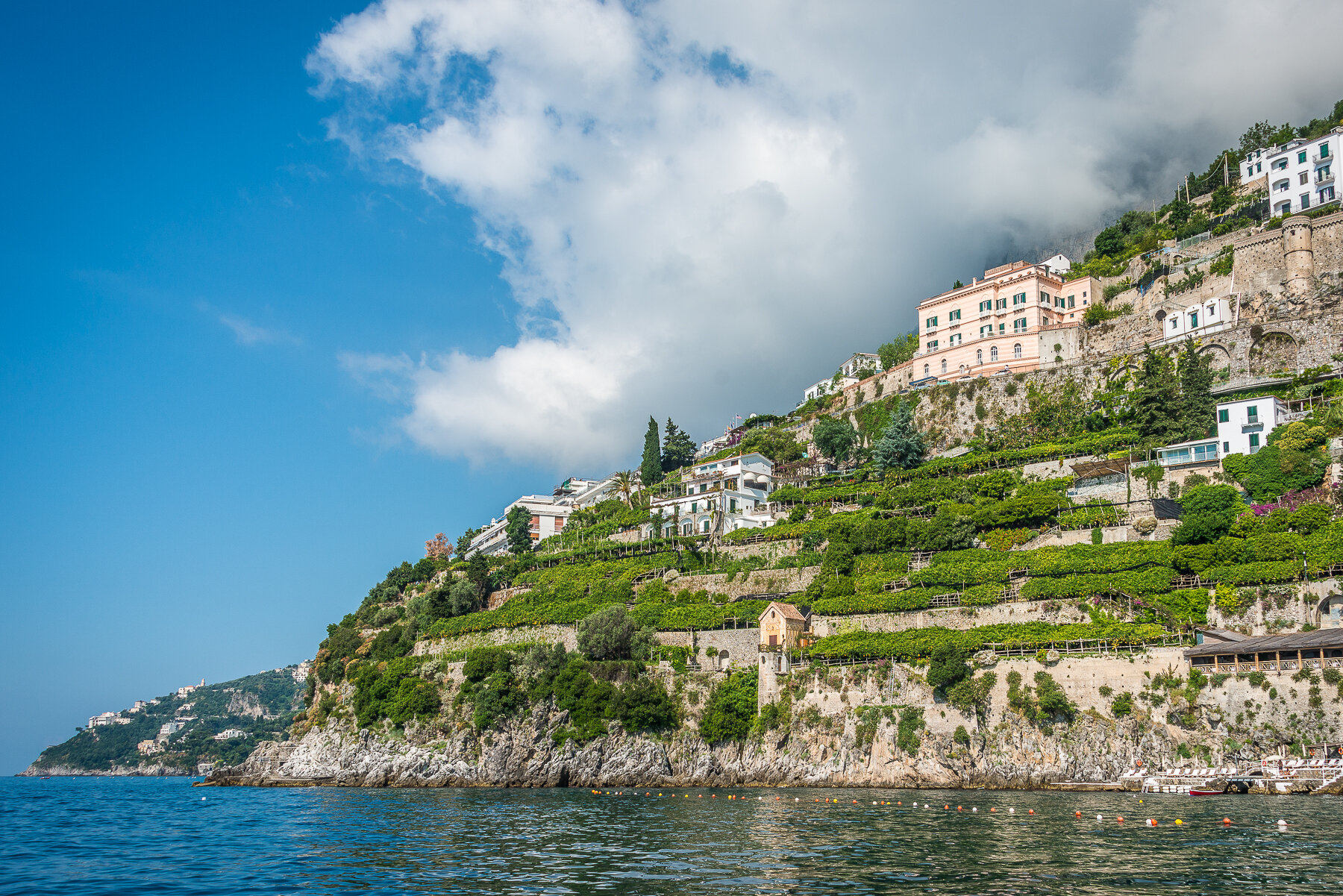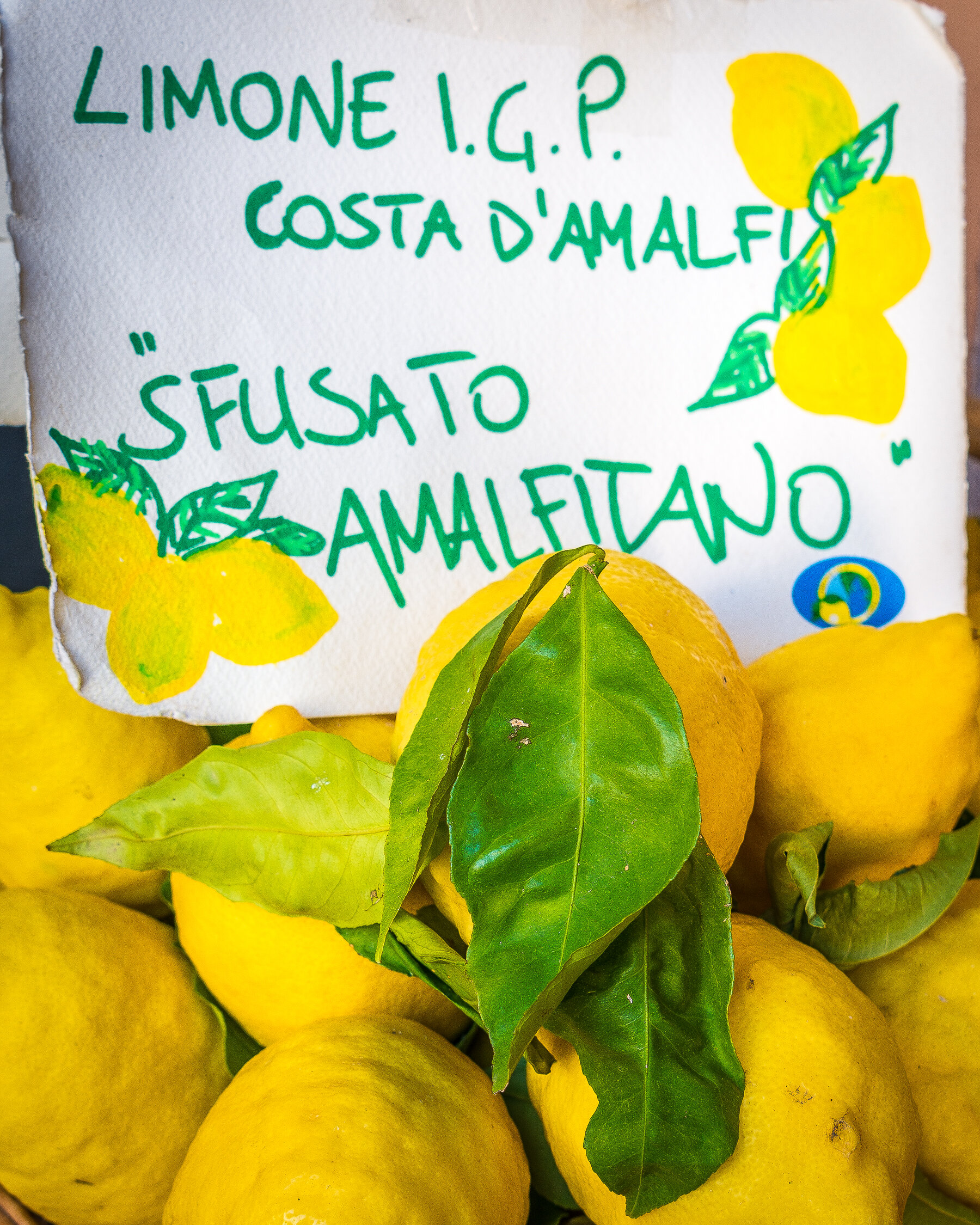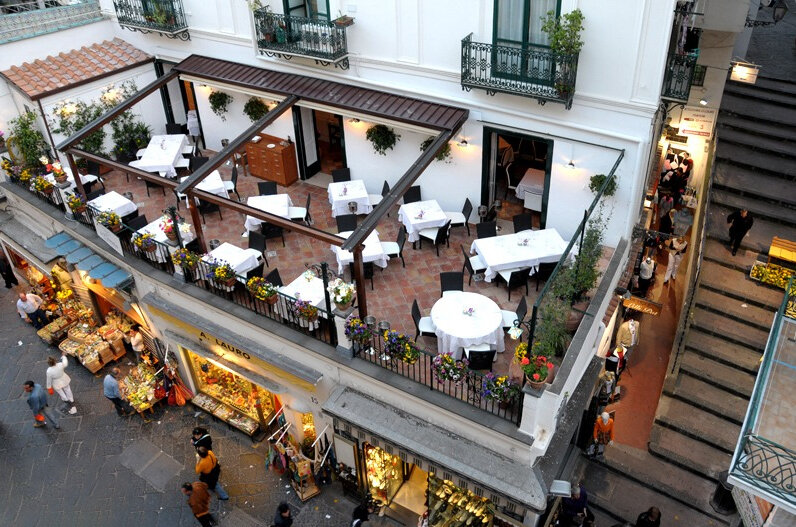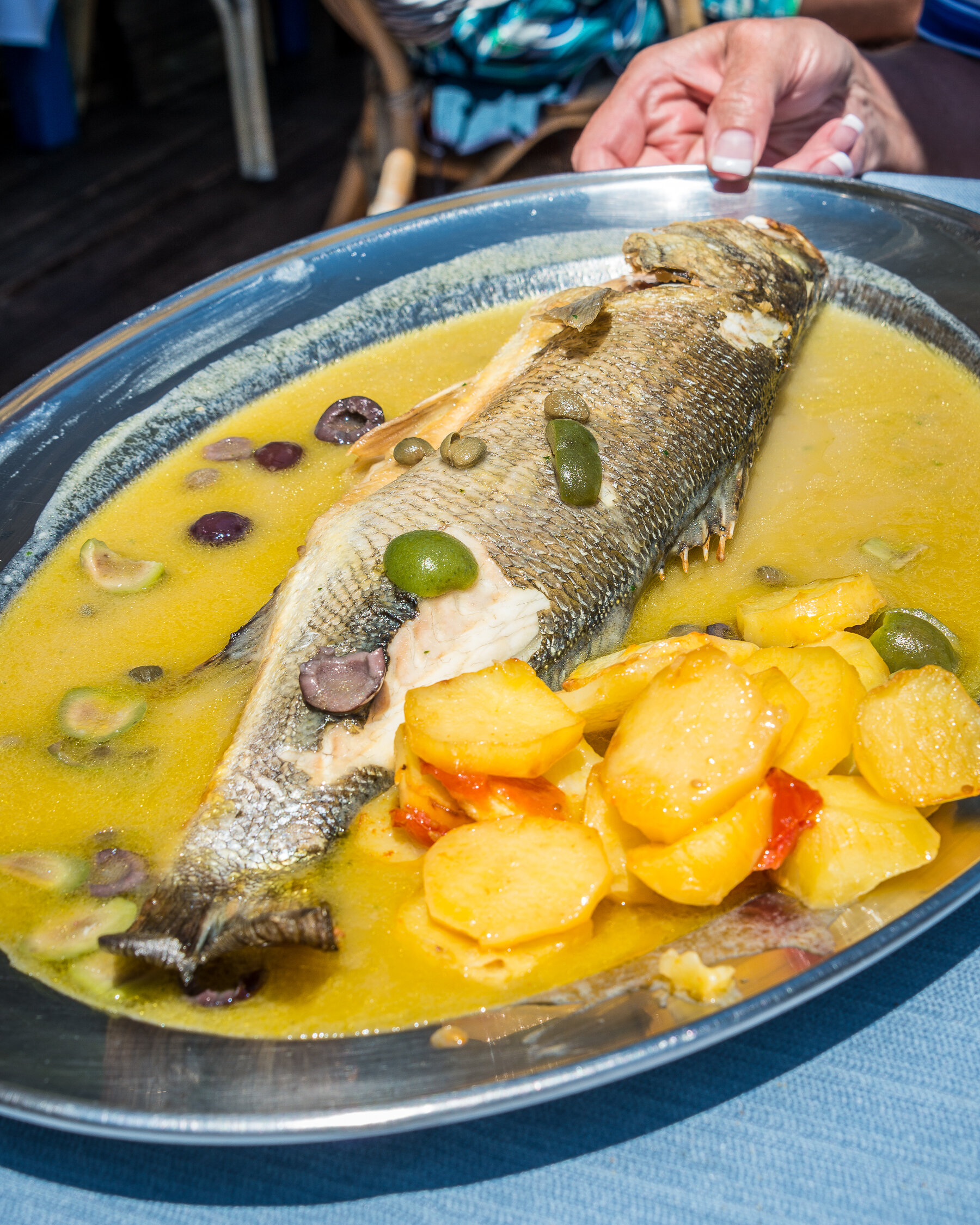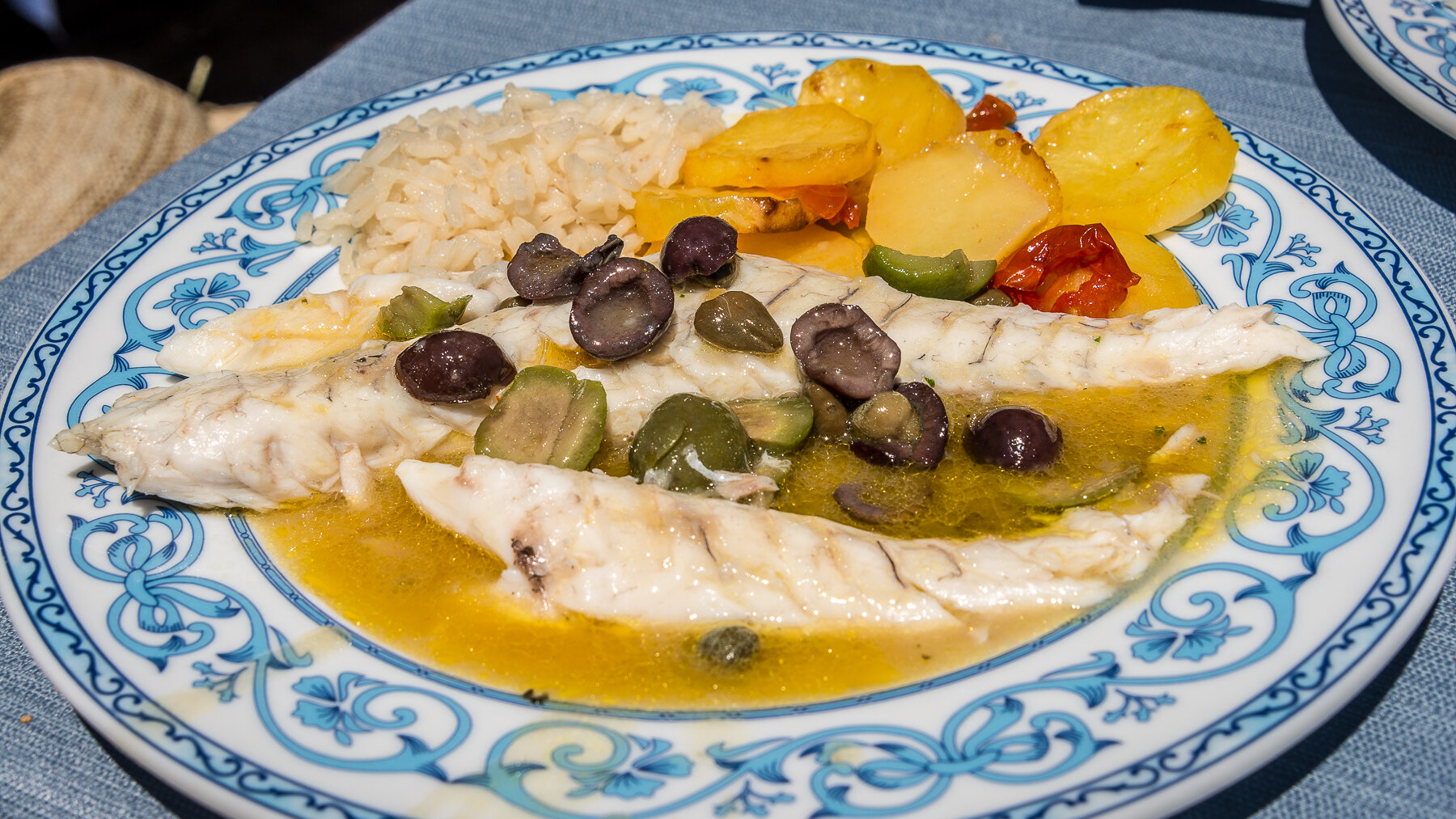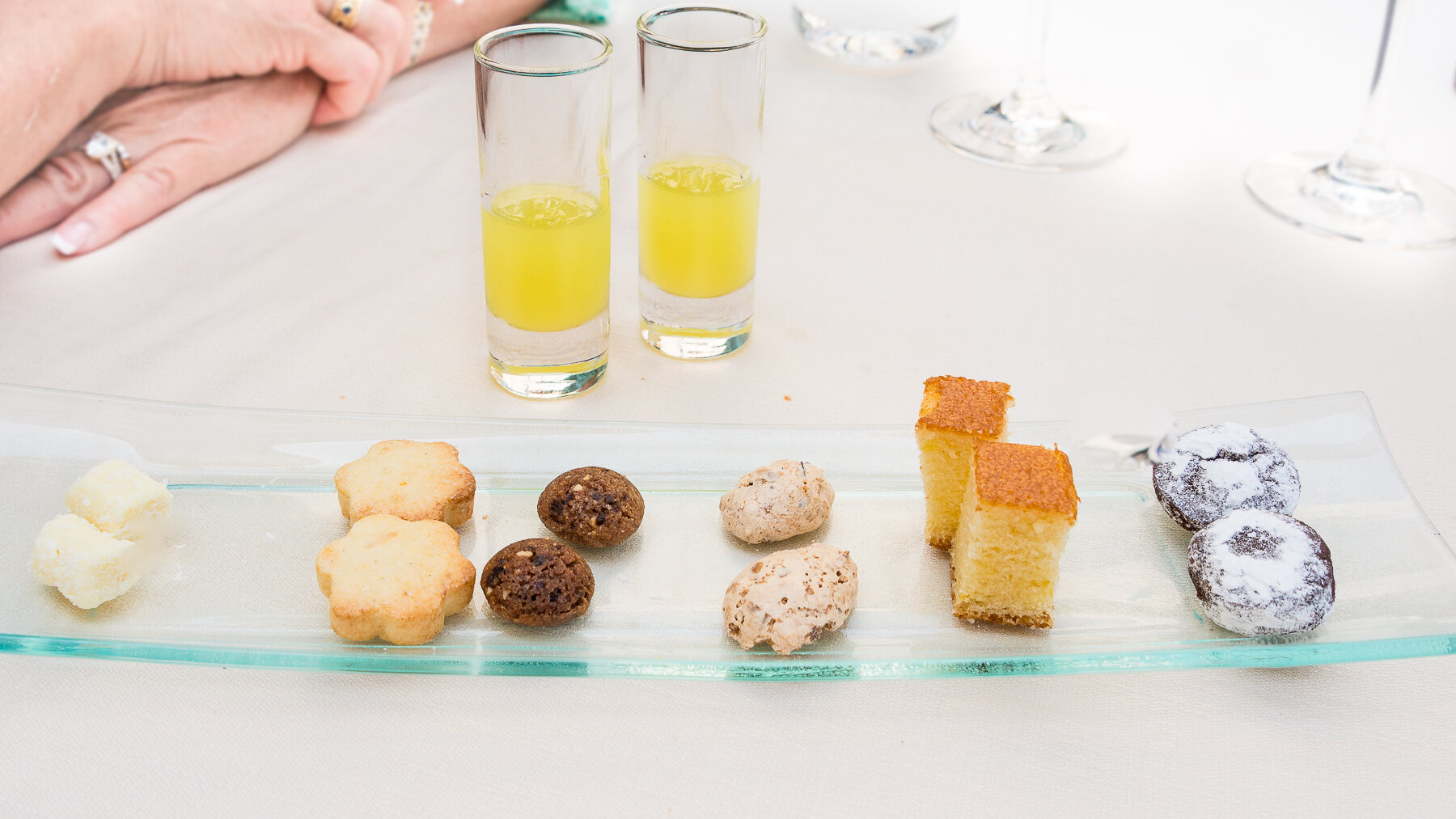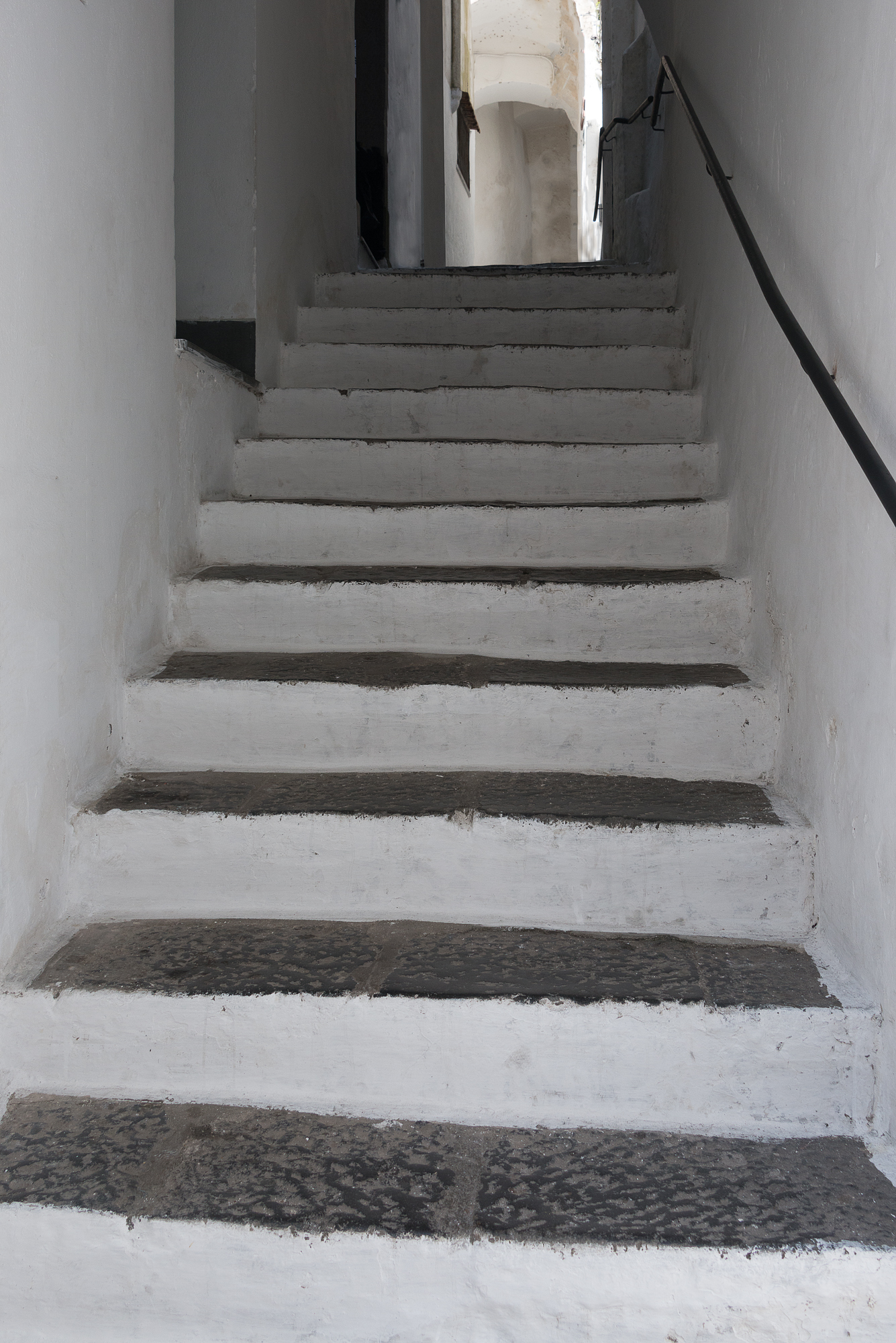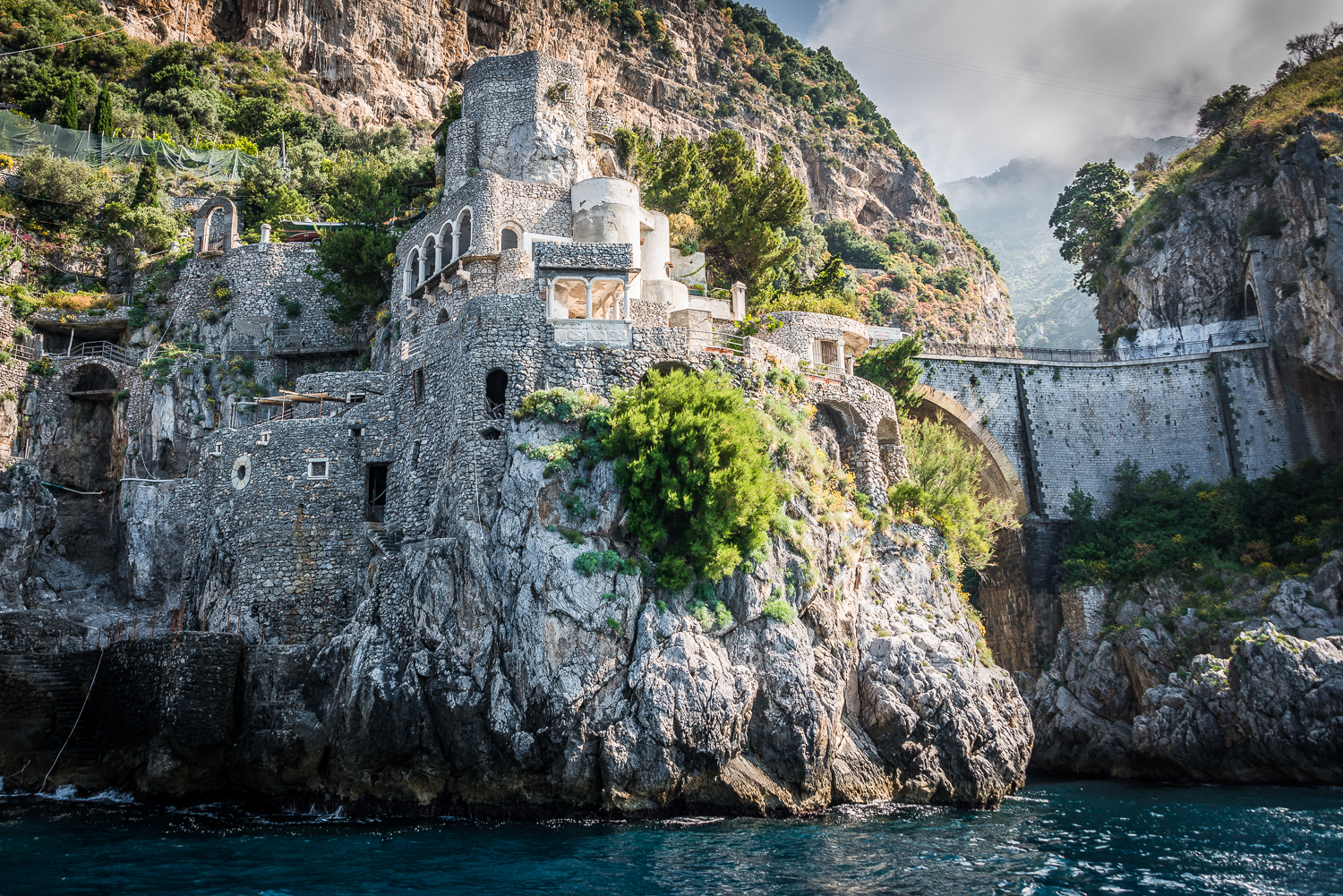Note the ubiquitous sfusati (bulky lemons) on the Da Gemma lamp fixtures
Today we are going to pay a lunch-time visit to a restaurant that was recommend by our concierge at Hotel Convento in Amalfi. And now, we recommend it to you, too…that is, if you happen to be on the Amalfi coast of Italy.
Since you’re staying at the fabulous Grand Hotel Convento, and it’s not too far into Amalfi town, let’s walk.
Along the way we’ll check out the small town campo, the church, and a few of the local shops.
So, join me now as, off we go to a now-favorite trattoria, Da Gemma.
Getting Into Town from Our Hotel
But, before we begin our journey into town, we need to rise-and-shine. We woke up a bit early this morning to catch sunrise from the Hotel Convento. It was spectacular, wasn’t it? You can learn a good bit more about the Hotel Convento by reading my article titled, Staying in a Convent Retreat.
Sunrise from the Grand Hotel Convento
A Post-Breakfast Swim
I’m sure you remember the nice swim we had after breakfast in the hotel’s cliff-side infinity pool. You looked fabulous in that new swimsuit, by the way!
Cliff-side pool of the Grand Hotel Convento
Talk about a pool with a view to infinity! Nice, huh?
To infinity and beyond…actually to Sicily
Making Our Way Into Town
OK, we’ve toweled off and changed clothes, so into town we go. Good move not wearing shorts…that’s a sure sign of a tourist in Italy.
Rather than taking the elevator down to the roadway, we’ll walk the many steps that wind their way down to town. Don’t worry, it’s all downhill from here.
There’s our destination…the red arrow points the way to the one-and-only road that pierces the heart of the ravine town of Amalfi.
[BTW: you can see the pool house about a quarter of the way into the photo from the left, and a third of the way down…and those horizontal rows of foliage below Amalfi’s mausoleum and the hillside above town, we’ll talk about those as we’re strolling in Amalfi]
As we near the bottom of the winding stairway, we look up to see our hotel poised on the edge of a cliff.
We’ve come a long way in the down-vertical direction
Wandering Our Way To Trattoria Da Gemma
Now, to work our way to our destination for lunch, Da Gemma.
In this aerial view of ravine-dwelling Amalfi, you can see Da Gemma in the blue box. But, as we are a bit early for lunch, we decide to first explore Amalfi’s charms. We’ll start with the Duomo di Amalfi (in the orange box), which is dedicated to San Andreas (aka Saint Andrew, the brother of Saint Peter). You can read a bunch about San Andreas, his relationship to Scotland, and this church, in my article titled, Transforming the Cathedral of San Andreas.
The blue box marks Da Gemma…the orange, the cathedral of San Andreas
The Piazza Duomo
As we start toward the church, there is a small piazza (more of a campo) with an age-old statue of San Andreas.
“Why the x-shaped cross?”, you ask…it’s because Saint Andrew's martyrdom by crucifixion was on a cross called a ‘saltire’ cross, which is an ‘x-shaped’ cross, like the one he is holding onto in his last moments.
You can see just a bit of the statue to the left in this very old photo of this same campo.
Here is my own rendition of the old photo, which I created using Google ‘street view’. As they say, “Close, but no banana”.
The Duomo (Cathedral)
Just across the street we see the steps of the cathedral I’ve removed all of the people from the photo except the bride, standing at the top of the steps. And, I replaced a blah sky with one of more drama. The Duomo has a rather magnificent mosaic façade.
Here you can see the exquisite detail of the mosaic, with a still-different sky.
Here are just a few interior photos, as Ellen leads us inside.
Beautiful! But, it’s time to begin our walk toward Da Gemma.
Street Life in Amalfi
This hungry, but well mannered, pup outside the butcher’s shop reminds us of just how hungry we too, are.
But, to get to Da Gemma, we have to negotiate the one-and-only street through town. Yes, this it it! Via Lorenzo D’Amalfi.
The street is so narrow that there are traffic lights that alternate traffic from north to south.
Another Google street-view photo below shows us that street light. The sign above the red light asks motorists to turn off their engines whilst waiting for a green light, rather than idling out emissions in this pedestrian laden area.
One must wait for vehicles preceding you (before you caught that red light) to travel over 1,000 feet on a green light, and then wait for oncoming vehicles to traverse that same distance before your own green light is activated…then add a good bit of pedestrian slowed time to the formula. I have no idea if this is all done automatically, or whether someone monitors the situation to change the lights at the appropriate time. But hey, it’s Italy!
See the folks in shorts? Tourists.
To avoid the occasional step-into-a-doorway routine, you can use one of the pedestrian tunnels that parallels the roadway, like this one.
An Amalfi pedestrian tunnel
A Few Street-Side Shops
Along our way, we pass shops selling this and that. This one sells mostly wine, as it is an ‘enoteca’.
And, this one features bottle after bottle of Limoncello. This sweet-tart-sweet (I’m emphasizing the sweetness, here) liqueur is made from lemons that abound along the Amalfi coast.
Limoncello is not made from your momma’s lemons, though. A single lemon is called a ‘sfusato’, and they are just a bit on the bulky side. The photo below showing sfusati hanging from the arbor was taken at our Hotel Convento. And, in the photo taken on our full-day boat trip to Capri, you can the ubiquitous terraces of sfusati layered up the hillside. Virtually all of the sfusati are destined for limoncello.
[Want to know more about having a fabulous day traveling along the Amalfi coast on your way to the Isle of Capri? See my article titled, “One Fine Day”]
And, did you notice the prosciutto hanging in that limoncello laden shop? What is that smeared on the cut-end of the leg? You can learn more about prosciutto in my previous article on Italian meats titled, “Eat This: Italian Meats - Part 1”.
Trattoria Da Gemma
Ahhh, we’ve reached Da Gemma, which means that it’s time for lunch!
Da Gemma is not a flash-in-the-pan restaurant. This trattoria has been around since 1872…and we’re glad of it.
Trattoria Da Gemma
It’s not located on the street, but thankfully, above it. Your al fresco dining is on a lovely terrace, above the hustle-and-bustle of Via Lorenzo D’Amalfi.
We’ll take those steps up to the right to get to our lunch.
As we typically do, we start our meal by enjoying a bit of the bubbly…prosecco. Cold and refreshing!
Sparkling Prosecco
The waitstaff are super helpful and friendly…as is everyone we encountered in Amalfi. Here is Alfonso, who took great care of us.
And here are the two handsome young men behind the glass who man the pasticceria.
We’ve now ordered, and Ellen has been given a rather dangerous looking tool. We’ll have to see what that’s for.
But first, it’s time for a refreshing white wine. Alfonso recommended this Greco di Tufo. It is much like a Gavi…rich, refreshing and light…we like it! And of course, it’s a DOCG wine.
This is some sort of amuse-bouche, and at this seven-years-past-the-event stage, I have no idea what it was. But it was well plated, presented, and it tasted yummy.
As is customary for a meal in Italy, the pasta course is a ‘primi’, or first course, which is typically followed by a meat course. Notice the beautiful plating. And that tomato-heaven sauce on the pasta…bellissimo.
One most always gets a presentation of the prepared fish course
Our fish dish, ready to be plated
For us, the secondi meat course is a nice branzino (sea bass), cooked perfectly. It was presented table-side (above), and then Alfonso and helper began the deconstruction needed to plate the dish for us.
And, here is our fish course, complete with potatoes and a superb buttery-lemony sauce.
This dish is typical of seafood-dish presentations you will find in Italy. As proof, here is another sample of a superb fish course, this one enjoyed the next day on the Isle of Capri.
Do they do dolce in Italy? Yes, they do. The one of the left is the one we ordered. The one on the right…with limoncello…is house-provided…just in case one needs more sweets in one’s life.
All so very satisfying. Will we have room for this evening’s dinner? Always!
Along with the presentation of il conto (the bill), Ellen is presented with a couple of souvenirs of Da Gemma.
As we depart, we say a fond, “Grazie e arrivederci” to the friendly, competent kitchen staff.
La Fine
I hope that you enjoyed tagging along with us on our Amalfi adventure today.
Now, two questions:
What was that tool for that Ellen was holding? I have no remembrance of that. And I have no photos of a food item needing such a treacherous tool.
Who is going to help us get back up to our cliff-side hotel? We need a lift…literally.
If you find yourself in Amalfi town, please pay a visit to Da Gemma…you will not be disappointed. If it’s OK with you, we’ll walk with you from the hotel, high on the hillside.
And, until our next adventure…
Ciao for now,
Steve
Don’t miss a single article of Italy, Our Italy…subscribe here!










